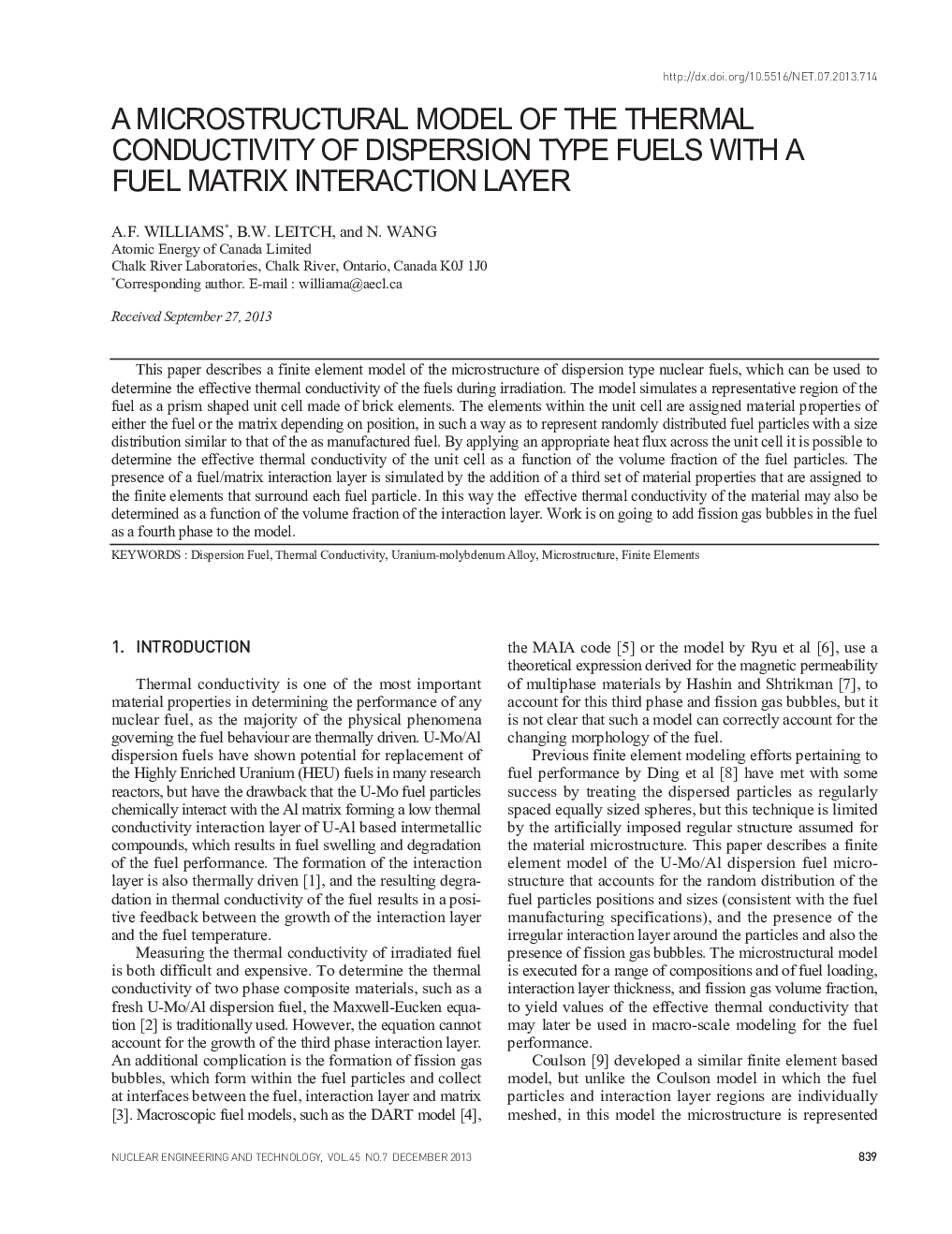| Article ID | Journal | Published Year | Pages | File Type |
|---|---|---|---|---|
| 1740095 | Nuclear Engineering and Technology | 2013 | 8 Pages |
This paper describes a finite element model of the microstructure of dispersion type nuclear fuels, which can be used to determine the effective thermal conductivity of the fuels during irradiation. The model simulates a representative region of the fuel as a prism shaped unit cell made of brick elements. The elements within the unit cell are assigned material properties of either the fuel or the matrix depending on position, in such a way as to represent randomly distributed fuel particles with a size distribution similar to that of the as manufactured fuel. By applying an appropriate heat flux across the unit cell it is possible to determine the effective thermal conductivity of the unit cell as a function of the volume fraction of the fuel particles. The presence of a fuel/matrix interaction layer is simulated by the addition of a third set of material properties that are assigned to the finite elements that surround each fuel particle. In this way the effective thermal conductivity of the material may also be determined as a function of the volume fraction of the interaction layer. Work is on going to add fission gas bubbles in the fuel as a fourth phase to the model.
